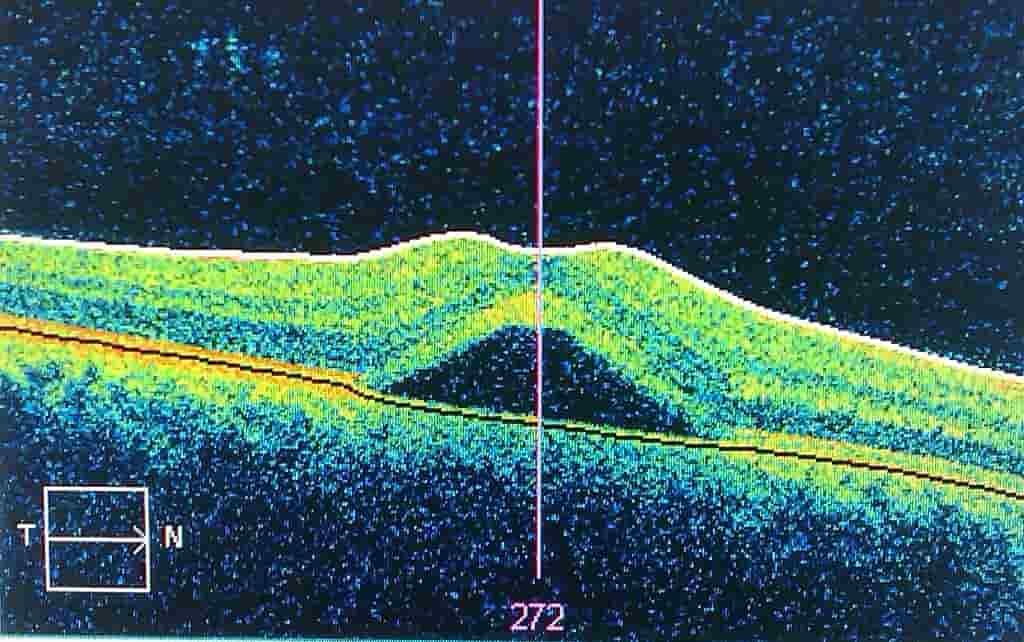Central Serous Chorioretinopathy
Central serous chorioretinopathy is fluid accumulated in the subretinal space. It is an eye disease that causes visual impairment, usually temporary, usually in one eye. When the disorder is active it is characterized by leakage of fluid under the retina that has a propensity to accumulate under the central macula. This central serous chorioretinopathy results in blurred or distorted vision (metamorphopsia). A blurred or gray spot in the central visual field is common when the retina is detached. Reduced visual acuity may persist after the fluid has disappeared.
Symptoms
Typical symptoms of retinopathy centralis serosa are:
- Minor visual impairment
- Blurred vision
- “Grey-black spot” ( scotoma ) in the visual field (reduced contrast sensitivity)
- Image distortions ( metamorphopsia )
- Long-sightedness ( hyperopia )
- Color vision disorders
Symptoms vary depending on the extent and location of the retinal elevation. A leak in the area of the central retina (macula) results in strong distortions. For leaks that occur outside the macula, only small eccentrically located, iridescently colored spots or rings are sometimes seen. These can be particularly noticeable when blinking and in semi-darkness, in front of tables on the screen and when looking at white areas.
Read also: Eye Diseases and Common Eye Problems (List of eye diseases and disorders)
When working with tables it is also easy to see the distortion from straight lines to waves and warps. At first you usually only have the feeling of a slight glare – but this is only on one side and does not go away within minutes, as you are used to.
Evolution
In most cases the disease heals spontaneously between 1 and 4 months. This is the most common acute form in young subjects. It does not require treatment.
If after this period there is no improvement, a treatment can be proposed. Sometimes the treatment is offered earlier if the visual needs of the patient require it (professional causes for example).
CRSC can recur in the months or years that follow.
Some forms of CRSC have a chronic, relapsing course, affecting both eyes. They then constitute a pathology called “diffuse retinal epitheliopathy” whose functional prognosis is reserved.
Treatment
It is considered in the absence of spontaneous healing beyond 4 months of evolution.
– Photocoagulation of the vanishing point(s) visible in angiography if these vanishing points are outside the visual axis.
– Dynamic phototherapy with visudyne off-label.
– Medical treatment with Eplerenone or Spironolactone being evaluated.
Information: Cleverly Smart is not a substitute for a doctor. Always consult a doctor to treat your health condition.
Sources: PinterPandai, American Academy of Ophthalmology, The American Society of Retina Specialists
Photo credit: Author: Russell Neches / Wikimedia Commons (CC BY-SA 3.0)
Title: Central serous retinopathy.
Photo description: this an occurance of central serous retinopathy in his retina (also called central serous choroidopathy) causes a blister-like swelling in layers of the retina. Imaged using optical coherence tomography with a Zeiss Visante OCT machine. Unfortunately, the software does not allow easy export of the data, so this is a cameraphone picture of the display.



